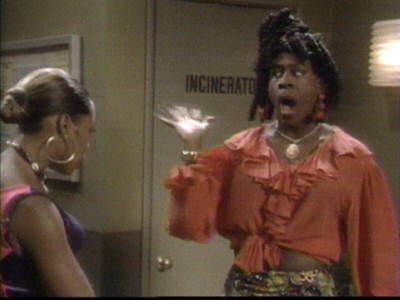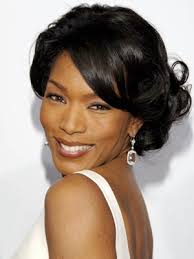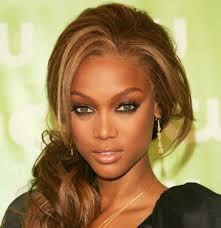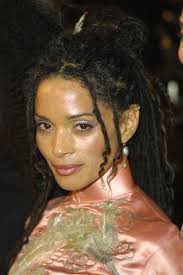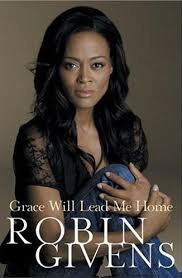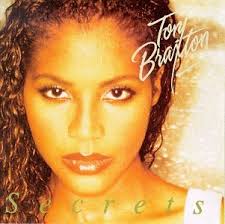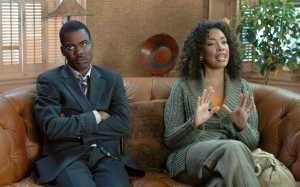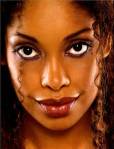Archive for the ‘women’ Category
Uncle Ruckus on Tiger Woods
Posted in Tiger Woods, Uncle Ruckus, videos, white women on Fri Apr 9th 2010| 33 Comments »
Madam C.J. Walker
Posted in 1900s, America, black women, businnesswomen, hair, inventions, St Louis on Wed Mar 3rd 2010| 8 Comments »
 Madam C.J. Walker (1867-1919), an American businesswoman, was the first self-made Black American millionaire – and the first American woman too of any race according to the “Guinness Book of World Records”. She sold hair care products to black women, most notably the hot comb, which made straightened hair common among black women in the early 1900s.
Madam C.J. Walker (1867-1919), an American businesswoman, was the first self-made Black American millionaire – and the first American woman too of any race according to the “Guinness Book of World Records”. She sold hair care products to black women, most notably the hot comb, which made straightened hair common among black women in the early 1900s.
She did not invent the hot comb. It had been invented in Paris in the 1800s at a time when Egyptian hairstyles were in fashion. Sears was already selling them to white women in America in the 1880s. But it was Walker who sold them to black women as an easy way to straighten their hair (though even she first used it to help hair grow rather than to straighten it).
She was born Sarah Breedlove in Louisiana, across the river from Vicksburg, two years after the slaves were freed. Times were hard: yellow fever killed her parents, the Klan burned down her school, by age ten she was working picking cotton, by age 20 her husband was dead and she had a baby girl to take care of (A’Lelia Walker, who later became a figure of the Harlem Renaissance in the 1920s).
She moved to St Louis where her brother lived and worked as a washerwoman. As little money as she made, she still saved some of it to give her daughter the education she never had.
Then her hair began falling out. She tried all kinds of hair care products to make her hair grow back, but none of them worked. Some of them even made it worse!
In 1904 at the St Louis world’s fair she saw Margaret Washington, the wife of Booker T. Washington. Her hair was so thick and healthy! She wanted hair just like that.
That night she prayed, asking God to stop her hair from falling out. Then she had a dream: she was in Africa and a man was showing her the things she needed to make something that would help her hair to grow back.
That is how she tells it. Some say she had a pharmacist tell her what was in the hair grower of Annie Malone, a forerunner of Walker’s. At the time Walker was selling Malone’s hair care products door to door. She later modelled her company on Malone’s. (Some say Malone was the first black millionaire.)
In any case she moved to Denver soon after her brother died to be near his family. She spent nights working on her hair growing formula until she got it right. It came out in 1905. She called it Wonderful Hair Grower. It proved to be such a hit that other products soon followed and she started hiring saleswomen, training them in the use of her products.
The rest is history: in time she built a factory in Indianapolis and moved to Harlem.
Her name comes from her third husband, newspaperman Charles J. Walker, her husband at the time she went into business.
See also:
- black women’s hair: a brief history: 1900-1965
- Booker T Washington
- Other black businesswomen:
- Harlem
- Cynda Williams: Harlem Blues
Solange Knowles
Posted in 2000s, America, beauties, black women, houston, music, r & b, singers, Texas on Sat Feb 27th 2010| 10 Comments »

Solange, 2016.
Solange Knowles (1986- ) is an American R&B singer best known as the little sister of picture-perfect Beyonce. She has had three number one hits on the American dance charts:
2008: I Decided
2008: Sandcastle Disco
2009: T.O.N.Y.
The last two she wrote with Cee-Lo of Gnarls Barkley. All three songs are from her second album, “Sol-Angel and the Hadley St. Dreams” (2008). Like Raphael Saadiq, her music sounds like it is from the 1960s but made now – neo-Motown sort of stuff. Partly because she loves old soul music and partly, no doubt, because she is desperately trying not to sound like her sister! Her first album, “Solo Star” (2003), was all over the place in terms of musical style. Hadley Street is the street in Houston, Texas where her father’s record company stands and where she recorded the album.
She was never one of the main members of Destiny’s Child, though she has been a dancer and backing singer for them and one time did fill in for Kelly Rowland. When she was 15 she travelled the world with them as a dancer. After that her father thought she was old enough to handle a recording contract. Out of that came “Solo Star”.
“Solo Star” did not do well. She went into acting and landed parts in two films: she played the daughter of Vanessa Williams and Cedric the Entertainer in “Johnson Family Vacation” (2004) and then the head black cheerleader in “Bring It On: All or Nothing” (2006), the third film in that series.
In 2004 she married a football player, Daniel Smith. They had a son later that year, Daniel Julez J. Smith, and moved to the mountains of Idaho. In 2007 they divorced. Solange moved to Hollywood with her son.
Up to this point she had taken whatever opportunities came her way. They were great opportunities but she lacked inner direction. In Idaho it seems she got her head together and made up her mind to become a singer and songwriter, singing the kind of music she liked, not whatever producers like the Neptunes or Timbaland were pushing at her, making her sound like every other singer out there. She knew she liked Otis Redding, Marvin Gaye, the Supremes and so on, and she started from there, writing songs. That was the beginning of what became “Hadley St. Dreams”.
In August 2009 she cut off her hair. It was a brave move but it seems to have worked out well: she looks better in short hair. It brings out the beauty of her face much more.
She made my list of women with the most beautiful lips, just ahead of Molly Ringwald.
As someone who hates how Beyonce is pushed so hard at us and as someone who is a second son, it is hard for me not to like Solange. But even apart from that I do like her music more (featured here twice so far).
I know someone who knows someone who knows someone who knows her! Yes, we are that tight.
– Abagond, 2010.
See also:
- songs
- 2008: Solange: F*ck The Industry
- 2008: Solange: Sandcastle Disco
- 2008: Solange: I Decided
- 2012: Solange Knowles: Losing You
- 2016: Solange ft Sampha: Don’t Touch My Hair
- Beyonce Knowles
- Creoles – she is Creole on her mother’s side
- women with the most beautiful lips
- natural black beauty #2
- Kelis
Marie Laveau
Posted in 1800s, America, black women, free people of colour, Louisiana, New Orleans, quadroons, voodoo queens on Mon Feb 15th 2010| 19 Comments »
 Marie Laveau (c. 1801-1881), also written as Laveaux, was the most famous voodoo queen of New Orleans. She was at her height from the 1830s to the 1850s and has since become a figure of legend. There are at least eight songs about her, like “The Witch Queen of New Orleans” (1971) by Redbone. She even appears as a character in Marvel Comics (as a white witch in black latex). If you visit her grave and draw “XXX” on it with chalk you can make a wish.
Marie Laveau (c. 1801-1881), also written as Laveaux, was the most famous voodoo queen of New Orleans. She was at her height from the 1830s to the 1850s and has since become a figure of legend. There are at least eight songs about her, like “The Witch Queen of New Orleans” (1971) by Redbone. She even appears as a character in Marvel Comics (as a white witch in black latex). If you visit her grave and draw “XXX” on it with chalk you can make a wish.
She had a daughter of the same name who looked very much like her. She is known as Marie Laveau II, also a voodoo queen. It is hard to tell where the mother leaves off and the daughter begins. It seems likely the daughter took over in the 1860s.
As a voodoo queen Laveau healed the sick, told fortunes and sold gris-gris, a voodoo charm. For $10 you could buy a love powder. For up to $1000 she would use voodoo to help you win an election. She sported a snake.
Some say her power came less from voodoo or any kind of magic and more from knowing the right things about the right people: she was a hairdresser who worked for the wives of the top men in New Orleans. It seems likely she knew all about their love affairs and business deals – either from the wives themselves or from their servants.
It is hard to know where fact ends and fiction begins with her. In what seems to be the truest story a man came to her desperate because his son was about to be sentenced to death by a judge. He offered to give her a house. A few days later, to everyone’s surprise, the son got off.
She was Creole, one of the French-speaking people of New Orleans, and a quadroon too, meaning she was one-fourth black: her father was a white planter, her mother was half white and half black (and maybe part Native American too). Laveau was a free person of colour: she could own property but could not marry a white person.
She married her first husband in 1819, Jacques Paris, a free person of colour who fled the slave uprisings in Haiti. He died a year later and she became a hairdresser known as Widow Paris. Her next husband was Christophe Glapion. Because he was white their marriage was a common law one. Some say she had 15 children, but others say that some of those were her sister’s, also named Marie Laveau.
Laveau was a believing Catholic and even went to mass every day. It was common in those days for people to believe in both Catholicism and voodoo at the same time.
There were sightings of her after she died. Some may have been her daughter, but some took place even after she had died too. Laveau’s ghost is said to appear on St John’s Eve, June 23rd, wearing a handkerchief with seven knots.
– Abagond, 2010.
See also:
- voodoo
- Creoles
- Catholic
- Haiti: a brief history
- Redbone: Witch Queen of New Orleans
- diunital cognition – how Laveau could be sincerely both a voodoo queen and a devout Catholic
natural black beauty #2
Posted in 2010s, beauties, beauty, black women, natural hair, pictures on Mon Feb 15th 2010| 47 Comments »
My favourite pictures from Le Coil. Five of these pictures have already appeared elsewhere on my blogs.
Nina Keita, Ivorian model
 Angela Davis, American professor
Angela Davis, American professor
 Jessika M’Bengue, French model
Jessika M’Bengue, French model
 Pharah Y, Swedish clothes designer
Pharah Y, Swedish clothes designer
 “Frame” by Dawn Okoro, American artist
“Frame” by Dawn Okoro, American artist
 Res, an American singer, with Talib Kweli
Res, an American singer, with Talib Kweli
 Cassandra Wilson, American singer
Cassandra Wilson, American singer
 Tara (model) and Nydia (graduate student) in Crown Heights, Brooklyn
Tara (model) and Nydia (graduate student) in Crown Heights, Brooklyn
 Naimah, writer from the Lower East Side in New York
Naimah, writer from the Lower East Side in New York
 Alexandria, make-up artist from Soho, New York
Alexandria, make-up artist from Soho, New York
 Pictures by Brianna McCarthy, who blogs at Passion Fruit
Pictures by Brianna McCarthy, who blogs at Passion Fruit
 Sharri in Soho, New York, who blogs at The Brisk Convergence
Sharri in Soho, New York, who blogs at The Brisk Convergence
See also:
- Le Coil
- natural black beauty #1 – whose pictures come mainly from Gorgeous Black Women
- Angela Davis
- dreadlocks
Staceyann Chin
Posted in biracial, black women, Blasians, Brooklyn, jamaica, lesbians, mixed race, New York, poets, recovering Catholics, slam poets, writers on Tue Feb 2nd 2010| 55 Comments »
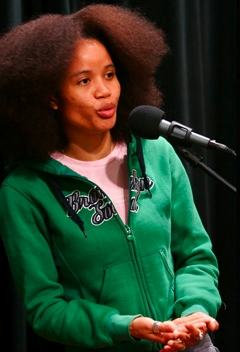 Staceyann Chin (1971- ) is a slam poet from Jamaica who now lives in the country of Brooklyn in New York City. She travels the world performing and teaching poetry. Unlike most poets she has been on Oprah’s television show and has her own Blockbuster Online page.
Staceyann Chin (1971- ) is a slam poet from Jamaica who now lives in the country of Brooklyn in New York City. She travels the world performing and teaching poetry. Unlike most poets she has been on Oprah’s television show and has her own Blockbuster Online page.
I thought maybe she was just television-driven fluff, that she had no substance, but when she made me cry at her grandmother’s death – not mine but hers – then I knew she could write.
She was a slam poet before slam poets were in fashion, when it was still underground in New York. Like in Ancient Greece, slam poets perform their poetry for an audience with judges picking the winner. Their pieces generally run three minutes long and tell a story. A video of one of her pieces is at the end of this post.
She got into slam poetry almost by accident: one day she went to the Nuyorican Poets Cafe. The rest is history.
Her first published book is not of her poetry – she is not ready for that yet – but a story in prose about her first 24 years: “The Other Side of Paradise” (2009).
She was born on Christmas day in Montego Bay, Jamaica, the unwanted daughter of a rich Chinese businessman and a poor black woman. Her mother left the country soon after and Chin was brought up by her grandmother, then in her sixties. Although unwanted by her mother, her grandmother loved her unconditionally. No one has ever loved her more. Because her grandmother could not read, Chin read the Bible to her, especially the psalms – a slam poet in training!
All that ended at age nine when her mother arrived from Canada, briefly, and put her with a great-aunt whose sons tried to force her into sex. She was shifted from house to house without a home, till age 16 when she went away to boarding school and then university – paid for by a Chinese businessman who denies he is her father.
At age 21 while at university she found out she was lesbian. She only told close friends: in Jamaica you cannot live openly as a homosexual and expect to not be beaten up or, in the case of women, raped.
As much as she loved Jamaica, she had to leave: it would not allow her to live freely as a lesbian. So at age 24 she came to New York:
New York was my godsend. As soon as I landed, I knew I was in a place that welcomed misfits.
No one in New York cared if she kissed girls. She was free! Yet not free: she was black. In Jamaica, because of its colourism, she was favoured for her light skin. But in America she found herself at the bottom – for the very same skin, now seen as black. America may have been more enlightened about lesbians, but it was way less enlightened about black people.
See also:
Angela Bassett
Posted in 1990s, 2000s, actresses, America, Americans, beauties, black women, Hollywood on Fri Jan 22nd 2010| 49 Comments »
Angela Bassett (1958- ), an American actress, is perhaps the best black female actress alive in Hollywood. She is both more beautiful and far more talented than Halle Berry, the only black woman so far to win an Oscar for best actress. Bassett has played Tina Turner, the wife of Malcolm X (twice) and the mother of Biggie Smalls.
Some of her films:
- 1991: Boyz N the Hood
- 1992: Malcolm X
- 1993: What’s Love Got to Do with It
- 1995: Waiting to Exhale (pictured above)
- 1995: Strange Days
- 1998: How Stella Got Her Groove Back
- 2006: Akeelah and the Bee
- 2008: Meet the Browns
- 2009: Notorious
I already knew who she was by the time she appeared in “Malcolm X” but apparently it was playing Tina Turner a year later in “What’s Love Got to Do with It” that made her name with mainstream American audiences.
She lost the lead in “Introducing Dorothy Dandridge” (1999) to Halle Berry. She turned down the lead in “Monster’s Ball” (2001) because of how it shows black women – and because she does not do nude scenes. Halle Berry took that part and went on to win an Oscar for best actress.
Angela Bassett was born on the very same day as Madonna: August 16th 1958. She was born in Harlem but her mother soon moved to St Petersburg, Florida, where she grew up in public housing.
In 1974 she saw James Earl Jones in “Of Mice and Men” on a school trip to Washington, DC:
I just sat there after the play, boo-hoo crying, weeping. I couldn’t move, and I remember thinking, “My gosh, if I could make somebody feel the way I feel right now!”
From that moment she began to think about becoming an actress.
She got a scholarship to Yale. After getting her degree in African American Studies, she studied acting at the Yale School of Drama. She had to unlearn her Southern accent. There she met Courtney B. Vance, whom she would one day marry.
After Yale she acted in some television ads, the soap opera “Guiding Light” and two August Wilson plays. Then her friend Larry Fishburne helped her to land a part in “Boyz N the Hood”. She played the mother of the main character – but to her she was playing her own mother. That got her noticed as a serious actress in Hollywood.
In 1993 she starred opposite Fishburne in “What’s Love Got to Do with It”, with her cast as Tina to his Ike. She broke her hand during shooting – but that only helped her to play Tina Turner even better. Tina Turner did her make-up and taught her the dance moves. One reviewer said that Bassett, “captures the erotic youthquake that was Tina Turner in the ’60s and early ’70s”.
In 1997 she married actor Courtney B. Vance. He played her husband when she appeared in the last season of “ER” (2008-2009). They have a boy and a girl: Slater and Bronwyn, both born in 2006 by means of a surrogate mother (Bassett was 47 at the time of their birth).
See also:
- Halle Berry
- beauty lists that she makes:
- black actresses
- Notorious
- Harlem
- Terry McMillan – who wrote “Waiting to Exhale” and “How Stella Got Her Groove Back”
Assata Shakur
Posted in 1970s, America, black biography, black women on Mon Jan 4th 2010| 36 Comments »
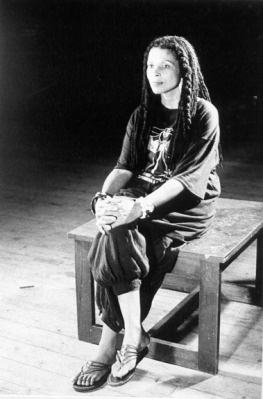 Joanne Chesimard (1947- ), better known as Assata Shakur, is a black American revolutionary and former political prisoner. She now lives in political exile in Cuba. The FBI says she is a terrorist, “armed and extremely dangerous”, offering a million dollars for information leading to her arrest. Congress asked Cuba to turn her over. The New Jersey police asked the pope for help in getting her back. She is the aunt and godmother of Tupac Shakur.
Joanne Chesimard (1947- ), better known as Assata Shakur, is a black American revolutionary and former political prisoner. She now lives in political exile in Cuba. The FBI says she is a terrorist, “armed and extremely dangerous”, offering a million dollars for information leading to her arrest. Congress asked Cuba to turn her over. The New Jersey police asked the pope for help in getting her back. She is the aunt and godmother of Tupac Shakur.
In 1977 she was found guilty of first-degree murder for the 1973 shooting death of a policeman on the New Jersey Turnpike. She was broken out of prison in 1979 and, after five years of laying low, made her way to Cuba in 1984. Her autobiography, “Assata”, came out in 1987.
On May 2nd 1973 she and two friends of hers were driving down the New Jersey Turnpike when the police pulled them over. The police said it was for a broken tail light on their car, but more likely it was for driving while black. She was asked to put her hands up. She did but then was shot twice and then in the back. One of her friends tried to protect her. In the shoot out both her friend and one of the policemen were killed. Another policeman was wounded and so was her other friend.
Four years later an all-white jury found her guilty of murdering the policeman even though her hands were in the air (the only way her wounds make sense) and there was no proof she ever touched a gun.
With no hope of justice and fearing that she would be murdered in prison, she escaped and got to Cuba where she lives today. Fidel Castro himself said he will not give her up.
She had been on trial six times before on other charges, mainly bank robbery and murder, but none of the charges stuck. The government had no proof for any of it, not even for what they got her on in the end: they just wanted to keep her tied up in court and in prison.
In the 1970s the American government cracked down on black revolutionaries. The FBI used the police, the courts and, indirectly, the press. Some they killed outright, others they put in prison or tied up in the courts.
Shakur belongs to the Black Liberation Army, which broke off from the Black Panthers. She believes violence is necessary for blacks to become free and equal: it is the only way whites will give up enough power.
But she believes education is also necessary: guns will not do the trick if black people remain brainwashed, by the schools and by the news:
The schools we go to are reflections of the society that created them. Nobody is going to give you the education you need to overthrow them…I am convinced that a systematic program for political education, ranging from the simplest to the highest level, is imperative for any successful organization or movement for Black liberation in this country.
See also:
- Assata Shakur – Social Justice Wiki – a good website on her at Columbia University. The first draft of this post was way longer: there is so much I had to cut out. I only present the bare bones here. If you like that website, then you should read her book: do not wait for Hollywood.
- FBI: Wanted: Joanne Deborah Chesimard – see her wanted poster at the FBI
- Angela Davis – more famous; less violent in her philosophy
- Paul Robeson
- bell hooks
- driving while black
- The New Jersey Turnpike – the main road heading south from New York City. It is infamously racist – and postworthy.
- Some stuff I have in common with her:
- Jamaica, Queens – where she was born and spent a good part of her childhood
- Catholic – she was Catholic at least as a girl
- loves to read
- frequently stopped by the police
- Has a dim view of the press and the police – and of American world power
What I like in black women
Posted in black women, stuff on Tue Dec 8th 2009| 51 Comments »
Disclaimer: I am speaking only for myself, not for all men. Also I am trying to be honest rather than politically correct. I will make wildly general statements based on limited experience, but that is in the nature of a post like this. It would be tiresome to begin each sentence with “In general, based on my painfully limited experience”, but you can imagine that they do. Also: there are black women who fit none of what follows and probably those who are not black who fit all of it!
What I like in black women, from the outside in:
First, black women are beautiful. They have the prettiest eyes and the best figures.
Some black women have eyes that seem to go all the way down to their souls. When I look into them time stands still. It is like I am in another world. I think it is called an adrenalin rush. Only a few times in my life have I experienced that with white or Asian women.
General looks: I like women with thick bodies, thick lips, thick, black hair and high cheekbones. Black women are far more likely to have all those things than other women. They also have the best bottoms ever.
Growing up people made fun of my lips, so women with big lips have a special place in my heart. Some people think they are ugly. To me they are beautiful.
When black women age their skin holds up way better. Also, it is almost never pale – pale skin turns me off.
When they get fat they do not lose their good looks as easily: I find myself looking at fat black women but not at fat women who are white or Asian.
I like how black women do not sugarcoat things. They are more honest with their thoughts and feelings. If anything they are too honest, which makes it hard, but I would much rather have that than a woman who pastes a false smile over everything.
Black women are far more accepting of me. I feel more like I can be myself.
Black women understand me way better, so much so that I do not always have to complete my sentences; so much so that they help me to understand myself better. White women just kind of look at me, leaving me hanging, like I was talking about butterflies from New Guinea.
Black women seem like they are deeper, less like airheads. I cannot stand airheaded women.
Black women are more likely to be religious, or at least it seems that way. I like that too.
Some say white women are easier to get along with. I have never gone with one so I cannot say. I did have an Asian American girlfriend once. She would say, “Whatever you want”. It got tiring.
Some say black women are too “ghetto”. I have known plenty of black women from ghettos. Very few fit the stereotype.
Thanks to commenter Marnie 2010 for kind of suggesting this post.
See also:
Black women are not ugly
Posted in 2000s, America, beauty, black women, race, stuff on Mon Dec 7th 2009| 83 Comments »
I am going to give this thing a second try, having failed to get my point across the other day when I wrote “Why black women are seen as ugly”. Fingers crossed:
Black women are not ugly, not hardly, yet many Americans seem to think so because they see them through racist eyes.
Mainstream American ideas of beauty are based on white women. Because whites run the fashion and film industries that affect what millions see as beautiful, even people of colour:
- thin figure
- pale skin
- blue eyes
- long, straight, flowing yellow hair
- large breasts
Most black women fall well short of that. Not because they are ugly, but because that idea of beauty is not based on them.
This Hollywood idea of beauty is just a matter of taste. I know because I do not share it. I also know because White American ideas of beauty have themselves changed through the years. For example, Heidi Klum or Gwyneth Paltrow would have been considered ugly in the 1960s – an age when white beauties had lovely hourglass figures, like Brigitte Bardot and Raquel Welch.
Since it is just a matter of taste it cannot prove anything about the beauty of black women. Why should we suppose Hollywood’s taste for thin blondes is any better than, say, mine for thick black women with pretty eyes? But it does prove one thing: that despite the best efforts of Hollywood, millions of men still find black women to be beautiful.
Some think black women look too much like men. Yet, from what I can tell, black women in general have more of a womanly figure – one that clearly sets them off from men – than most white or Asian women.
Some think black women look too much like monkeys. That is kind of odd when it is white people who have so much in common with chimpanzees:
- thin lips
- straight hair
- white skin
Strange how these are some of the very things black women are looked down on for not having.
These sort of beliefs about how black women look are not based on careful anatomical comparisons but flat-out racism that views black women as being neither truly human nor truly women.
Many of the black women you see in Hollywood are stereotypes: they are either too ugly or plain (Mammies), too mean (Sapphires) or too loose (Jezebels). Very few are women of grace and beauty. The effect is to make black women seem less desirable than they truly are. These stereotypes come from racism not from the “preferences” white people presumably have for the beauty of their own women.
This racism has absolutely nothing to do with the supposed ugliness of black women. It has everything to do with white people’s need to look down on blacks – so that they can feel good about themselves and their unjust position in society.
And that is why white people think the lips of Angelina Jolie look good on her but not on black women.
See also:
- Why black women are seen as ugly – my first failed attempt at this post
- Halle Berry is not the most beautiful black woman in the world
- What this blog has taught me about white people
- Black women are beautiful – according to my tastes
- white beauty: a brief history
- the white lens
- Asian fetish – blacks and Asians are viewed by whites in ways that are a little too opposite to be an accident.
Why black women are seen as ugly
Posted in 2000s, America, beauty, black women, race, stuff on Thu Dec 3rd 2009| 773 Comments »
Warning: Some will find this post offensive as it deals with some ugly racist thinking.
Black women are beautiful, but from the American media you would never know it. Maxim, Playboy and Vogue magazines, for example, make their living by showing beautiful women, yet show hardly any black women – as if they came from Sweden or Utah, not New York and Chicago.
Some possible reasons black women are seen as ugly:
- Black women look too much like men. Steve Sailer says it is because they have more muscle mass than women of other races. J Richards of majorityrights.com says it is because their jaws are too big. And so on.
- They look too much like monkeys and gorillas. It has been shown that white people in the back of their minds think of monkeys when they see black people. So you see even Michelle Obama compared to a gorilla.
- It is just a matter of preference. White people prefer the beauty of their own women. How does that make them different than any other race?
- The white lens. Most Americans, even those of colour, are brainwashed to some degree to prefer white beauty because of white control of the media and of the culture in general.
- Racial scripting. Whites are trained to notice blacks who fit their stereotypes. So they notice the Mammies (fat and ugly), the Jezebels (who look like prostitutes) and Sapphires (mean looking) while discounting the graceful and beautiful Sades and Phylicia Rashads of everyday life.
- Flat-out racism. Whites look down on black women so much they do not see them as women, missing their beauty.
- Envy. Deep down whites know that black women are better looking than they let on but do not want to admit it. So when Jennifer Lopez or Angelina Jolie have some feature of a black woman, it is called beautiful, but not when the same thing (only better!) appears on a black woman. Or: when white women lay in the sun to darken their skin it makes them look better. Yet when a black woman is born with skin the very same colour it does not.
Uncle Milton, a white commenter on this blog from California who is intellectually honest, said this about the envy argument:
In my 48 years as a white male in the US, the number of white men seriously attracted to black women seems to be in the distinct minority. … for the most part white guys are attracted to white women (well ok.. a pretty significant minority are attracted to Asian women).
That matches what I have seen in New York: a white man can walk right by a beautiful black woman and not even seem to notice her. Like she is not there. She is on every black man’s radar but not his.
There is a bit of truth in some of these arguments but I think in the end it comes down to flat-out racism, which in turn drives most of the others.
See also:
- race and beauty
- More on some of the arguments:
- OkCupid and race and dating
- Halle Berry is not the most beautiful black woman in the world
- Is beauty hard-wired?
Lorraine Hansberry
Posted in 1950s, 1960s, America, black women, Southside, writers on Mon Nov 30th 2009| 21 Comments »
 Lorraine Hansberry (1930-1965) was an American writer, best known for the play, “A Raisin in the Sun” (1957). It was the first play by a black woman to appear on Broadway.
Lorraine Hansberry (1930-1965) was an American writer, best known for the play, “A Raisin in the Sun” (1957). It was the first play by a black woman to appear on Broadway.
James Baldwin:
… never before, in the entire history of the American theater, had so much of the truth of black people’s lives been seen on the stage.
It is such a great play that even with a limited actor like Sean Combs playing the lead it is still powerful.
The play is about a black family that buys a house in a white suburb – something her own family did. The first two acts are kind of slow but the last act about moving day is pure, utter genius.
In 1961 it was made into a Hollywood film starring Sidney Poitier, who had played the lead on Broadway. She wrote the screenplay.
Her two other main plays are “The Sign in Sidney Brustein’s Window”, which was on Broadway in 1964 but was not a hit, and “Les Blancs”.
Some of her writings were made into an autobiography after her death, “To Be Young, Gifted and Black” (1969). James Baldwin wrote a beautiful introduction, “Sweet Lorraine”.
Incomplete works at the time of her death:
- “Toussant”, an opera
- “All the Dark and Beautiful Warriors”, an autobiographical novel
She was also thinking of doing plays on Pharaoh Akhnaton, Mary Wollstonecraft and Charles Chesnutt’s “The Marrow of Tradition” (1901).
Born on Chicago’s Southside. her family moved to a white suburb when she was eight. Angry whites gathered in front of their house. A brick was thrown through the window that narrowly missed her. The police were unwilling to protect them. Later the state supreme court ordered them out of the house.
In 1948 she went to the University of Wisconsin. There she became interested in left-wing politics and theatre, studying Ibsen and Strindberg.
In 1950 she dropped out and headed for New York. There she took courses at the New School and, for three years, wrote regularly for Paul Robeson’s Freedom. Later she taught school in Harlem and took part in protests. At one protest she met Robert Nemiroff, whom she married in 1953. In 1956 he wrote a hit song with a friend (“Cindy, Oh, Cindy”) which allowed her to become a full-time writer. She started writing “A Raisin in the Sun”.
In 1960 she wrote “The Drinking Gourd”, a television show for NBC about slavery. NBC never aired it because it was too violent and too “divisive”. But you can read it in “Lorraine Hansberry: The Collected Last Plays” (1983).
In 1962 she joined SNCC and a year later she and James Baldwin went to see Robert Kennedy, then the Attorney General, to try to get him to understand race in America. In time their words sunk in.
In 1963 she began to lose her strength: the doctors said she had pancreatic cancer. Two years later she was dead – at age 34. Over 600 came to her funeral in Harlem.
Baldwin:
Her going did not so much make me lonely as make me realize how lonely we were.
See also:
Halle Berry is not the most beautiful black woman in the world
Posted in 2000s, America, beauty, black women on Tue Nov 24th 2009| 635 Comments »
 Beauty is in the eye of the beholder and to this beholder Halle Berry is hardly the most beautiful black woman in the world. I have several lists of beautiful women on this blog and people keep asking, “Where’s Halle?” So this keeps coming up. I will write my opinion in this post and point readers to it.
Beauty is in the eye of the beholder and to this beholder Halle Berry is hardly the most beautiful black woman in the world. I have several lists of beautiful women on this blog and people keep asking, “Where’s Halle?” So this keeps coming up. I will write my opinion in this post and point readers to it.
First of all, I do think Halle Berry is beautiful. I never said she was ugly and never would. I am not blind. I have thought she was beautiful ever since 1992 when I saw her in “Boomerang” (pictured). She was in “Jungle Fever” the year before but there she played a crack lady so her beauty was not apparent (not unless you thought about it).
So it is not a question of whether she is beautiful but only if she is the most beautiful. On that score I think there are plenty of black women who are better looking, like Angela Bassett, Sade, Tyra Banks, Gabrielle Union and Lisa Bonet to take some better known examples.
Some women I just cannot tear my eyes off of – like Gabrielle Union, Lisa Bonet and Sanaa Lathan. Halle Berry does not affect me that way. So that is another way I know she is not the most beautiful, not to me.
When I look at Halle Berry I can tear my eyes off of her. She is pleasant to look at and has a nice smile, but there does not seem to be anything deep to it. When I look at her eyes I feel nothing. When I look at Lisa Bonet’s or Sade’s eyes, for example, I do feel something, they get to me, they draw me in. I generally like women with beautiful eyes and lips and a thick figure. Halle Berry has none of that.
Even in “Boomerang” itself I thought Robin Givens and certainly Lela Rochon were better looking (but not Grace Jones). Even Toni Braxton, who sang a song for the film, I thought was better looking.
Back then my judgement on the matter was much purer: Halle Berry was not yet a big name in Hollywood and I did not know she was half white, so those things could not affect my judgement.
It seems like what Beyonce is to music, Halle Berry is to black beauty: both seem to be pushed by Hollywood, their publicists or whoever, way beyond their merits. They are both good, but not that good. You wind up getting sick of them, almost hating them.
Hollywood seems to push Halle Berry as the height of black beauty. I mean, she is a black beauty, of course, but I cannot help but think that what they see in her is not her black beauty but her white beauty; that she is just another piece of their effort to push a sort of beauty that most certainly is white.
See also:
- Halle Berry
- The most beautiful black women
- Hollywood
- black actresses
- Women not pictured above:
- My own taste in women:
Gina Torres
Posted in 1990s, 2000s, actresses, Afro-Latinas, America, beauties, black women, New York, stuff, The Bronx on Wed Oct 14th 2009| 45 Comments »
Gina Torres (1969- ) is an American actress. She starred in the television shows “Firefly” (2002-2003) and “Cleopatra 2525” (2000-2001), but in general she plays a supporting character in science fiction & fantasy or FBI agent sort of shows, like “Hercules”, “24”, “Alias”, “Standoff” and two of the Matrix films. You can see her now in “FlashForward” which is an FBI science fiction show! She is tall, pretty and does her own stunts. Oh, and she can sing opera too.
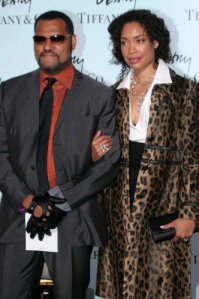 Those who do not watch those sort of shows might remember her as the wife of Chris Rock in “I Think I Love My Wife” (2007).
Those who do not watch those sort of shows might remember her as the wife of Chris Rock in “I Think I Love My Wife” (2007).
Off stage she is the wife of Larry Fishburne, another serious black actor. They married in 2002 and had a daughter, Delilah, in 2007. They live in New Rochelle, New York just north of New York City
She is tall, thin and has beautiful eyes and beautiful lips! Her natural hair seems to be Type 3. She is as tall as a model: 5 foot 10 (1.78 m). And as tall as her husband!
At first I thought she was Nuyorican. She is in fact from New York – she was born in Manhattan and grew up in the Bronx – but her parents came from Cuba, not Puerto Rico. Her father was a newspaper typesetter.
Her parents loved Latin jazz and so did she. She wanted to be a singer – and had talent: she got into La Guardia High School for the Arts in New York. She sang opera, jazz and gospel. She wanted to go to university and had the grades but her parents did not have the money.
So she went to Lincoln Center and did office work hoping to get noticed. She did. That led to stage acting (“Dreamgirls”, “Antigone”, “Blood Wedding” and others) and, in time, to television. From 1995 to 1996 she played Magdelena on the soap opera “One Life to Live”.
She got her start as an action character on “Xena: Warrior Princess” in 1997. She only appeared once, but that led to a regular part on “Hercules” (1998-1999) and then to two seasons of “Cleopatra 2525” (2000-2001) where she was one of the three main characters. That led to parts on the Matrix films and primetime shows.
Torres:
You have to have a spirit of warrior in you. You’re going to be facing battles as a woman in this industry and a woman of color. You have to be prepared to face battles of respect and pride and sexuality, and you can’t tire of fighting.
How Larry Fishburne won her heart: the Wikipedia says they met on the set of a Matrix film. Not true: they met and dated years before. One of their dates was during the New York blizzard of 1995: all the snow of one winter fell in one day. And they were outside having a snowball fight in Fort Tryon Park! Then they sat down on a bench overlooking the Hudson River. Sitting there knee-deep in snow he pulled out his harmonica and serenaded her.
See also:
- The most beautiful women in the world
- black actresses
- Women with the most beautiful lips
- Fellow Afro-Latinas from New York:
- Tamara Tunie
- Kelis
- New York
Mitrice Richardson
Posted in 2000s, 2009, America, black women, california, in the news, los angeles, missing black women on Thu Oct 1st 2009| 29 Comments »
Mitrice Richardson (c. 1985- ), a 24-year-old secretary from South Los Angeles, has been missing for two weeks.
- Height; 5 foot 5 (1.65 m)
- Weight: 135 lbs (59 kg)
- Tattoos: on the back of her neck and lower abdomen
- Wearing: a black top and blue jeans
- Last seen: at 1:25 am on Thursday September 17th 2009 leaving the Malibu/Lost Hills police station in Calabasas, California.
- Reward: $10,000.
If you see her call the Los Angeles police. But please call her mother or father too because the police have been bad at following up on this:
- Her mother, Latice Sutton, at (909) 282-9134
- Her father, Michael Richardson, at (310) 283-4717
 Unlike most missing black women, Richardson has made the news nationwide: both NBC and CNN have carried the story. But apart from her race she is like most of their missing persons: young, female, middle-class and pretty.
Unlike most missing black women, Richardson has made the news nationwide: both NBC and CNN have carried the story. But apart from her race she is like most of their missing persons: young, female, middle-class and pretty.
Her mother says she is manic-depressive (bipolar) and that on the night she disappeared she was in the manic stage, meaning she was not quite in her right mind. Signs of that:
- That afternoon she sent “erratic” text messages to her friends;
- She went to a very nice restaurant (Geoffrey’s Malibu) looking like the second picture (the police photo from that night), having her 1990 Honda Civic parked by a valet;
- According to workers at the restaurant she said she was from Mars and was there to avenge the death of Michael Jackson. She started talking in a made-up language (but that was after she was caught short on money and could not pay the $89.21 bill);
- She walked out into the night from the police station (after being arrested for failing to pay her bill) with no money, no car, no mobile phone and not even her ID. No buses run there in the middle of the night and the nearest shops were 20 minutes away on foot. (They kept her car because they found some marijuana in it.)
Her mother called the police station and said she would pick her up. She was led to believe they would hold her overnight till the morning. They did not (they later lied and said they did not have room). They did not even tell Richardson that her mother was coming.
Her father on seeing the police photo:
She looked like a demon had come inside her. That was not my daughter. It ran chills up my spine. I’ve never seen my daughter look like that.
And in that state they let her walk out into the night with nothing.
Five hours after she left a man called and said a woman was sleeping on his porch. She fit the description. The police took three hours to show up. By then the woman was gone.
The police have searched for her, but they have not followed up on all leads: at least one woman who reported seeing her was not called back.
Some of the roads nearby are very dangerous for walking as they go through canyon country – the kind that twist and turn and have a huge drop on one side.
Postscript: Her skeletal remains were found in Malibu Canyon on August 9th 2010, nearly a year after she disappeared. More at CNN.
See also:
- Mitrice Richardson’s MySpace page – last updated by her on September 16th
- Missing White Woman Syndrome
- Romona Moore
- The Rocky Mount Killer
- Virginia Dotson
- The police
- The black middle-class

![Solange - Sandcastle Disco [Official Video] Solange - Sandcastle Disco [Official Video]](https://i0.wp.com/i1.ytimg.com/vi/8NXsMEwvo9k/default.jpg)












